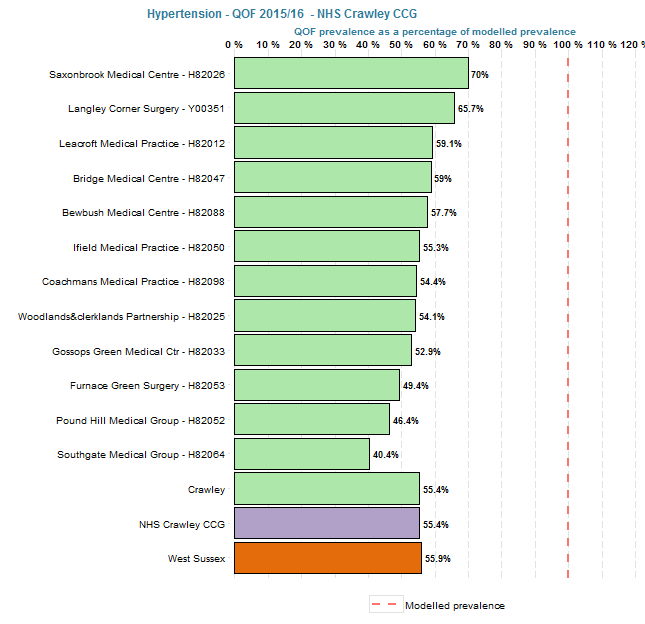Hypertension
High blood pressure (hypertension) is very common, affecting more than 1 in 4 adults in England (PHE - Tackling high blood pressure action plan). If left untreated, high blood pressure can increase the risk of a number of serious conditions, for example heart failure, heart attacks, kidney disease and stroke. Whilst improvements in treating high blood pressure have prevented or delayed many thousands of premature deaths, at present only 4 in 10 adults with high blood pressure are aware of their condition and are receiving the recommended treatment.
The graph below shows a breakdown of QOF (Quality Outcomes Framework) information for each locality (distinguished by colour) with each bar representing an individual practice. Each bar represents the percentage of people on GP registers compared to the modelled estimates for the condition. A value below 100% suggests that fewer people registered at a GP are recorded with that condition than the modelled prevalence estimates, and a value over 100% suggests that the prevalence of people registered at a GP exceeds the modelled prevalence of people with that condition at that surgery.
Comparing the registered with the predicted prevalence provides an estimate of an unmet, or undiagnosed need within the local population. It should be noted that prevalence figures are produced by applying nationally researched assumptions to each GP practice’s population and, as such, should be treated with some caution.
The figure shows that the QOF prevalence of hypertension for GP surgeries in NHS Crawley CCG is well below the modelled prevalence estimate. This suggests that almost half of the estimated population living with hypertension are undiagnosed and subsequently are not known to primary care as at risk of the serious conditions outlined above.

Data sources
- QOF: 2015/16 (published in November 2016)
- Practice Population: GP Practice Population (as at 31st March 2016)
- Prevalence Model: Eastern Region Public Health Observatory